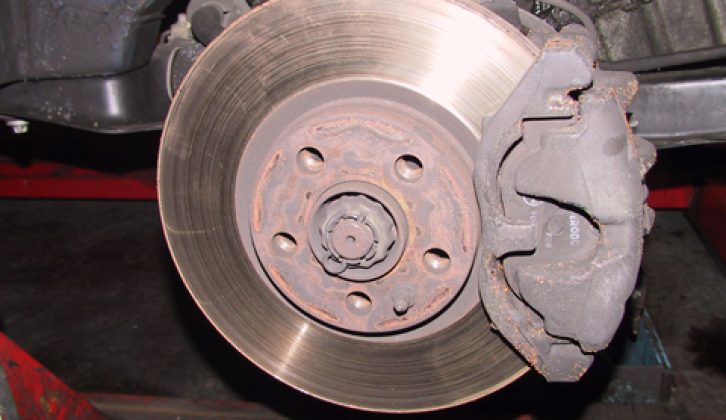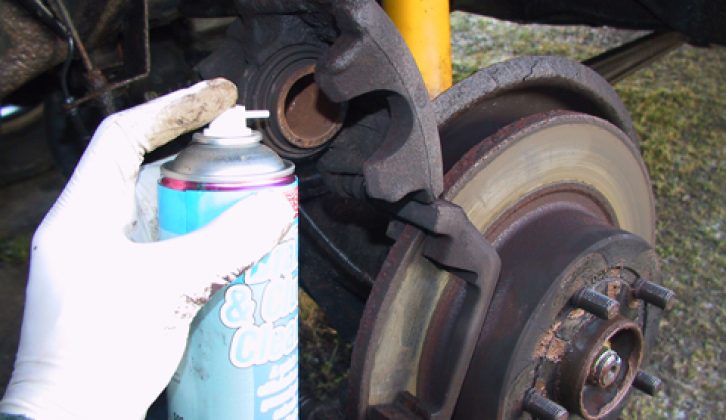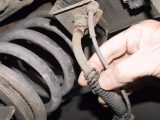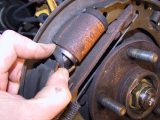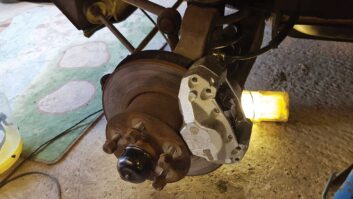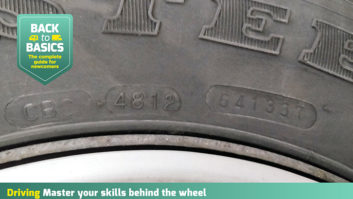Checking your motorhome’s braking system will help keep it safe on the roads and keep repair costs down.
Occasional safety checks of your motorhome’s braking system (removing each road wheel in turn to physically examine the brake components) are worthwhile, but brakes are too important to rely on a periodic spot check. You need to check them continually when driving by monitoring how the vehicle behaves and feels each time the brakes are applied. Additionally, you should check the brake fluid level weekly and during long journeys – any sudden loss of fluid indicates a developing leak and needs prompt attention.
Physical checks
Start the engine and press the brake pedal as hard as possible, and hold it there for a few seconds. It should feel firm at the bottom of its travel and not slowly sink further. Release it and press again normally to confirm it still feels firm after one stroke.
Pipes and fittings
Now use a torch to check for [tl:gallery index=1 size=215×129]fluid leaks from the brake pipes and connections in the engine compartment and under the vehicle. At the same time, note any rusted pipes. If the rust is light, clean it off with emery paper and protect the section with grease. While in the engine compartment, check the condition of the rubber vacuum pipes between the brake servo and the engine.
Wheels off
Jack up each road wheel in[tl:gallery index=2 size=215×129] turn and support the vehicle with an axle stand. Before removing each wheel, spin it to check the brake has fully released. With the wheel off, examine each brake hose, sliding any protective coil clear, and bend the hose with your fingers to expose cracks.
Check there is sufficient thickness on the brake pads and that they are wearing evenly. Uneven wear, or a sloping face, suggests the pad or its[tl:gallery index=3 size=215×129] caliper piston is sticking. The usual cause is a build-up of dirt or corrosion. Check for signs of fluid leakage around the caliper piston seals. The brake disc should be flat, smooth and free of scores across the whole of the pad width.
Before taking the rear wheels off, pull the handbrake on firmly to check it holds the vehicle without nearing the end of its travel (remember to chock the front wheels). Jack the wheel and fit an axle stand, then spin the wheel to confirm the handbrake has fully retracted.
On rear drum brakes, remove the[tl:gallery index=4 size=215×129] drum to check for fluid leakage from the internal cylinder. To do this, pull the rubber dirt cover back – this will show any early signs of leakage.
Check to make sure that the shoes have sufficient remaining friction material and that they are wearing evenly. Replace shoes and pads if they are damaged or are are likely[tl:gallery index=5 size=215×129] to wear down before the next inspection. Clean any dust out of the drum and backplate using brake cleaning fluid. Confirm that the brake shoe springs and fittings are in place.
Testing on the move
The driving seat is the place to continually monitor brake performance. It’s a matter of being aware of how the vehicle behaves when braking, and noticing subtle changes that give advance warning of trouble.
If the steering wheel pulls slightly [tl:gallery index=6 size=215×129]to the right when braking, the front left brake may be weak, or the right brake may be grabbing too fiercely. The opposite applies if the steering pulls left, although make allowance for any steep road camber which may affect the steering either way, depending on which side of the road you’re driving. A slight imbalance of the brakes can be enough to throw the vehicle off course during emergency braking.
Defective suspension dampers [tl:gallery index=7 size=215×129]have a similar effect on the vehicle’s directional stability. So, if a front corner of the vehicle dips excessively when braking on a bend, the dampers may be due for renewal. Steering wobble during braking can be caused by an overheated disc that has subsequently warped.
Imbalance in the rear brakes, with one side operating more efficiently than the other, can cause the rear end of the vehicle to move out when braking on bends, or one wheel to lock and skid on straight roads. Ideally, avoid braking on bends but, in emergency situations, applying brakes with these minor imbalances can easily cause loss of control.
Braking force is felt from the [tl:gallery index=8 size=215×129]driver’s seat. By being aware of the force at different braking speeds it’s possible to compare the effect and instantly notice if the force is below par. If the braking seems less effective, or the pedal has to be pushed further or harder than usual, the problem is likely to quickly worsen. There could be a brake fluid leak, or air in the fluid. If the brakes become progressively less effective during a long descent, pull over and allow them to cool, then have the brake fluid replaced as soon as possible.
Listen for noises. Grating sounds [tl:gallery index=9 size=215×129]when applying the brakes might indicate excessively worn brake pads. Squealing is caused by pads vibrating, perhaps because they are loose, or their movement is restricted by dust build-up. Noise from drum brakes suggests worn shoes or a broken return spring.
Emergency performance
Even if brakes normally feel safe and efficient, an emergency situation demanding extreme pedal pressure for a protracted period can show up hidden deficiencies that might cause the vehicle to swerve violently, or even a brake pipe or hose to burst.
To help avoid this, practice some[tl:gallery index=10 size=215×129] progressive emergency stops on a deserted, straight and well-surfaced road. Check there are no pedestrians or other traffic then, assuming the brakes have been working correctly, try an emergency stop from 10 mph. The vehicle should pull up squarely with no steering pull and no sideways lurch; otherwise, have the brakes checked and fixed right away. The same applies if a wheel locks up and skids, though this shouldn’t happen on modern vehicle with ABS. (ABS can disguise brake imbalance so, if ABS is heard clicking, or the foot pedal vibrates, it may be worth having the brake balance checked on a garage roller.)
If the vehicle performed safely,[tl:gallery index=11 size=215×129] increase the speed in stages up to around 30mph, making the same checks. Remember to confirm each time that there are no pedestrians or other traffic on the road, and always stop the tests and have repairs done if any deficiency is noticed. This not only checks the brakes, but also gives the driver experience of how to stop and handle the vehicle in an emergency situation.
Brake drag
After the test, halt the vehicle on a level surface but, just before it stops, release the brake pedal and let it roll to a halt. It should stop gently; if there is any abruptness, then one or more of the brakes is binding and needs attention.
[tl:gallery index=12 size=460]
